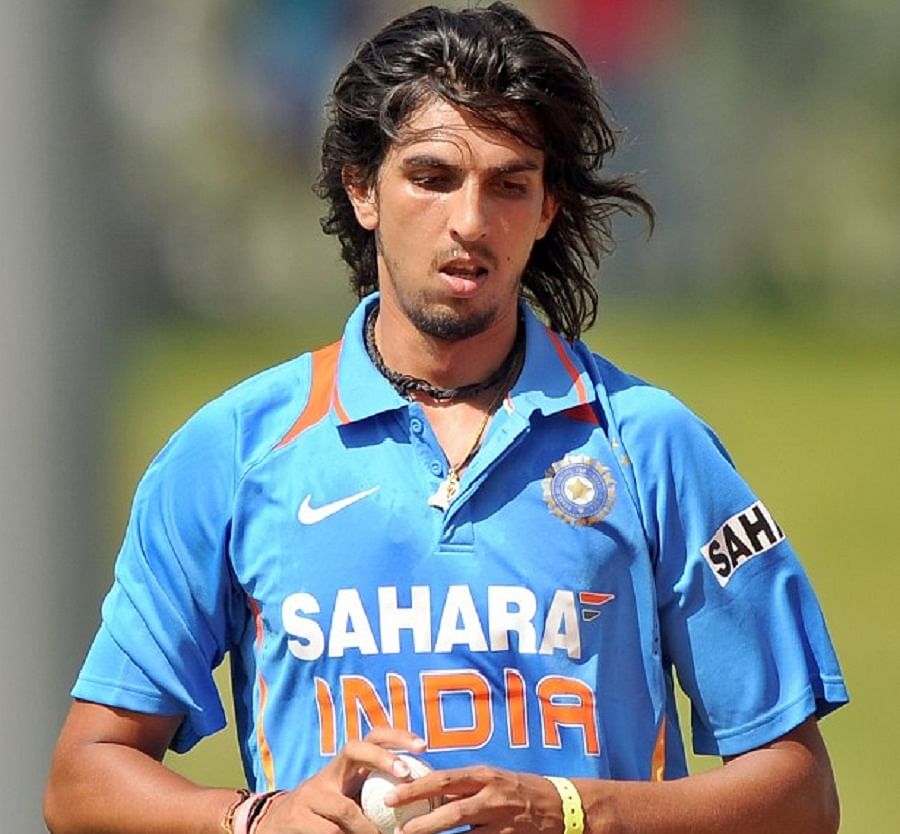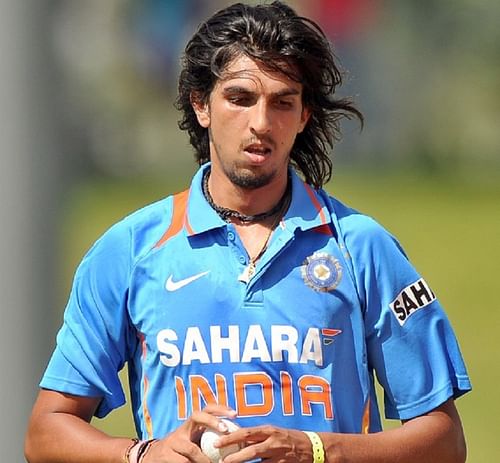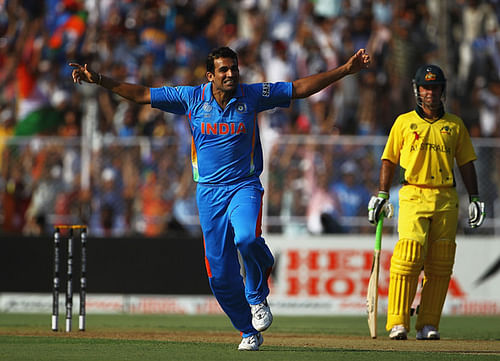
Bowling at the death - India's Achilles' heel

Ishant Sharma – Should he be the only one to be blamed for poor bowling?
Once upon a time in India, there existed a breed of cricketers called ‘death bowlers’. Wait. Really?
With resentment stronger than the cyclone that hit the Orissa coast a few days back flooding the entire country and the media houses churning out daily headlines on how one lanky cricketer sabotaged the honour of the nation and committed blasphemy against the national religion, it is not astonishing to find even the least knowledgeable showering their cricketing wisdom from fish markets to highway dhabas.
For the delighted cricket writer, who prefers to be identified as an Analyst, the failure of a Dehli pacer resulting in a defeat for the apparently invincible Men in Blue translates as a golden opportunity to dole out relishing investigation reports clad in cynical grandeur. With everyone on the verge of burning effigies of the alleged criminal, chances are remote that his outrageous impracticality will be exposed, thus avoiding the shattering of the carefully knit veil of romantically appetizing scrutiny.
It is no less amazing that hypocrisy among cricket aficionados has been promoted to the status of bragging rights than the fact that public memory is getting shorter with each passing day. Strangely ironical, it seems, when one looks back a month and finds this same Delhi lad being cheered by the same people for services to the country.
The malicious treatment you get from the media is not unjustified when you concede a match with some primitive bowling in the death overs. However, going overboard with sarcasm and criticism is the least likely solution to the lingering problem at hand.
A pariah now in the eyes of fanatics, Ishant Sharma is the same bowler who had restricted England at a crucial stage in the final match of the Champions Trophy to help his team lift the cup.
I know it is almost profane to defend Ishant in this unsympathetic predicament, and I, sincerely, do not intend to. All I wish to state is an unacknowledged fact – there had never been death bowlers in India.
Bowling at the death overs is by no means a walk in the park. It is one those responsibilities on the field that bears an uncanny resemblance to a gamble. Either the day is yours, or the day is your opponents’. There is nothing intermediate.
Being a death bowler is a highly demanding task – more psychologically than physically. An unperturbed attitude and relaxed mindset are essential for accurate execution of plans. More than brutal muscular power, a death bowler needs to stamp his authority in the psychological battle.
Self-confidence is as indispensable as is being street-smart. Death bowling is all about troubling the batsman by surprising him every now and then. As in gambling, the margin of error is ruthlessly small, and thus, precision remains a primary requirement.

Zaheer Khan – Perhaps the only man in India who knows how to bowl at the death
The list of death bowlers for India contains only a handful of half-hearted names. While the nation has never witnessed a Lasith Malinga, it will be unfair to overlook the efforts of Ajit Agarkar, Ashish Nehra and even R.P. Singh. India’s once pace spearhead Zaheer Khan had tried to establish his death bowling skills before being swept into the backstage by chronic failures.
With acute scarcity in the pace bowling armoury itself, it is almost ridiculous to debate about the elements of death bowling. However, the demand, as it now stands, is too large and visible to be overlooked.
The dearth of a crafty pacer in the entire country of 1.2 billion isn’t a proud tale for the numero uno team in the world. The problem is mounting and the skipper is no more shy of expressing it in public. The gravity and the urgency of the problem is well fathomable when the No. 1 team in ODIs bleeds more than 300 runs in three consecutive matches.
The solution, however, is inaccessible. Flat pitches, shortened boundaries, improved quality of bats are instrumental in constructing the graveyard for bowlers, and it is not unfamiliar for a team to give away 100 runs in the last 10 overs. The new ICC rules add to the agony.
Such biased measures are least cooperative in ensuring a fair battle between bat and ball. It is already mentally tough for a pacer to digest an over-boundary after running in a distance and delivering the ball. As if the gruelling physical demands of the game are not enough, he has to cope with the mental torture inflicted by the batsmen.
It is cruel to blame a bowler for having exhausted his ideas after being hit for a couple of consecutive boundaries. Ironically, this is exactly what is done.
The last few overs of the game are undoubtedly the most crucial. A death bowler is one who can see his team through such critical junctures. He is expected to hold his nerve even if he is being sent to the ropes. He is expected to deliver even if he is at the receiving end of the batsmen’s wrath.
Akin to gambling as it is, it’s not always your day. And when it isn’t, you are sure to get the boot. But the common enthusiast, as always, is unforgiving. As they say, “You are only as good as your last match.”
Having said all that, the nationwide wailing is not absolutely unjustified. The scarcity is genuine and it needs to be addressed as promptly as possible if India is to maintain its unassailable image in international cricket.
The only solution that remains for India as of now is to try out a spinner in the death overs. However, being perfectly aware of the consequences, Mahendra Singh Dhoni is least likely to be desperate enough to bet his luck on the opposition being uncharacteristically benevolent towards his slow bowlers.